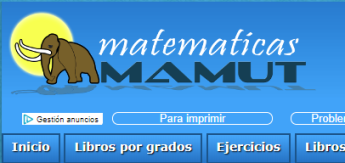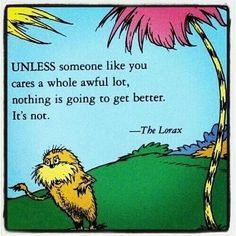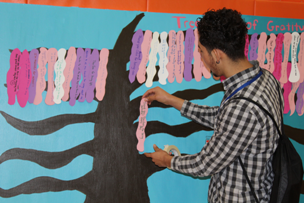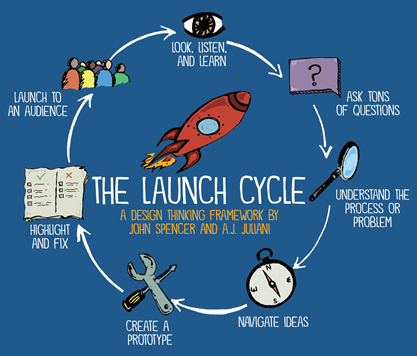NJ Teachers of English to Speakers of Other Languages/
NJ Bilingual Educators
Bilingual Elementary Representative: Jack Meyers- Access is Everything! ¡Acceso es Todo!
Bilingual/ESL Middle School Representative: Michelle Land- Advocacy Matters
Bilingual Secondary Representative: Larry Bello- Stakeholders Collaborating to Increase High School Graduation
Early Childhood Representative: LeighAnn Mathews- Shifting Your Mindset to Accommodate Today’s Young Learners
ESL Secondary Representative: Hana Prashker- ELLs and the Wellness Fair
Graduate Student Representative: Lizzett Gutierrez- Meet MSU Professor Sara Spaner
Higher Education Representative: Diana Sefchik- Mid-semester Reflections
Parent and Community Action Representative: Angeline Sturgis- Coming Soon: Our “Escuelita Comunitaria”
Special Education Representative: Sonya Bertini- Identifying ELLs with Specific Learning Disabilities
Teacher Education Representative: Bryan Meadows- Teacher Education SIG at the Spring Conference
WIDA Representative: Margaret Churchill- What is Task-Based Language Teaching?
Spring 2018 Features- Read more on our Features pages about academic language, allaying fears, and SIFE success.
 Bilingual Elementary
Bilingual Elementary
Access is Everything! ¡Acceso es Todo!
By Jack Meyers
When bilingual teachers get together and discuss the challenges they face in and outside of the classroom, it is inevitable that someone will utter some variation of the following phrases: “We could teach the students X, but we don’t have X,” or “We should be assessing the bilingual students for X, but all the assessments are in English,” or, finally, “We are supposed to be teaching in both languages, but they still need literacy skills in their native language (L1) and we don’t have enough at-level books in their L1.”
It all boils down to one key term: access. Access, access, access. For the bilingual classroom, access makes the difference when it comes to proficiency in one or both languages taught. That is access to resources in both, not just one, languages. This means access to valid and authentic assessments. Validity measures if an assessment is actually testing students’ abilities or, in many cases, just testing students’ abilities to decipher questions and testing language (See FCIT’s article on Classroom Assessment more information: https://fcit.usf.edu/assessment/basic/basicc.html). Authenticity is measured by students’ performance of skills in a real-world scenario. Lack of access to useful resources and valid and authentic assessments alone are enough to cause major headaches for bilingual educators.
Despite the obstacles we all know to be true, bilingual educators can find solutions to issues of access. For example, online teacher-created resources* are a solid place to start. Many universities and colleges also have aggregated materials, rubrics, and authentic assessments** that can be used to supplement (read: add to, not replace) what bilingual educators are already using.
Yet, even with supplemental materials, this is not the end of the road for us. Bilingual students represent nearly 10% of the United States Kindergarten-12 student population according to the U.S. National Center for Education Statistics and still there is not parity when it comes to curricular resources. One might assume that as demand for bilingual materials rise, so would the supply for such materials. Nonetheless, bilingual education has had its political opponents and now, more than ever, specifically with immigration policies under a microscope, it is our duty to demand that our students have equal access to a robust, varied, and multimedia educational experience.
*Teacher-Created Spanish-English Bilingual Classroom Resources
- Math: http://www.mamutmatematicas.com/ejercicios/
- Spanish Math: https://www.commoncoresheets.mx/ and English: https://www.commoncoresheets.com/
- Common Core-aligned resources for Literacy & Math in English, Spanish, Bengali and Chinese: https://www.engageny.org
**University/College-Created Rubrics, Assessments, and Materials
- Second Language Assessments: http://webapp.cal.org/FLAD/
- Research on/for Bilingual Education: http://www.cal.org/resource-center/
- Second Language Teaching Methods: http://coerll.utexas.edu/methods/
- National Clearinghouse for English Language Acquisition: https://ncela.ed.gov/resource-library
Jack Meyers, Bilingual Elementary SIG Representative, jmeyers@njtesol-njbe.org
 Bilingual/ESL Middle School
Bilingual/ESL Middle School
Advocacy Matters
By Michelle Land
Our Spring Conference, “Cross-Curricular Conversations for ELLs,” is rapidly approaching. Are you aware of the opportunity to celebrate advocacy on Wednesday evening, May 30th? While cross-curricular relationships are being strengthened across the board, our ELLs (English language learners) are facing challenging political and social climates. Their ability to perform well at school is overshadowed by the pressures facing them outside of school. A natural result is that we, as educators, become their advocates.
Advocacy is at the heart of what we do as educators. A thesaurus lists some of the following synonyms for “advocate”: to back, to defend, to encourage, to further, to justify, to promote, to root for, to advise, to boost, to argue for, to go to bat for, to plead for, etc. These are all appropriate and apt descriptions of educators.
Educators who work with English language learners (ELLs) are even more inclined to advocate for them. Due to a multitude of reasons, our ELLs have little or no voice. There are many reasons for this, such as lack of proficiency in English, ignorance of school culture, and fear of repercussions. All of these reasons contribute to our ELLs’ silence.
Why is advocacy part of the cross-curricular conversations that we need to have about our ELLs? The changes to the Every Student Succeeds Act (ESSA) that were approved by the Department of Education in August, 2017, affect us all. If a school has “n” number of ELLs, then 20% of the school report card is evaluated based on ELL progress on the ACCESS (Assessing Comprehension and Communication in English State to State) test. This is not just going to affect the evaluation of the ESL (English as a Second Language) or bilingual educator in a school. This will affect the whole school. As a result, the whole school has a vested interest in the success of these students.
What does advocacy look like? For many, advocacy is a picture of a person shouting out their opinions, or holding up a poster with some dramatic statement about how unfair it all is. For others, advocacy is educating oneself, or others, in order to make a political or social change. Advocacy can also be art, as in this “Climate Elephant” by Daniel Dancer. Here, 3,000 students and teachers in New Delhi created this living art of an elephant and rising seas that aerial artist Daniel Dancer photographed. It is an attempt to bring attention to climate change, right before a United Nations Climate meeting.
Advocacy is people working together to educate, support, defend, create, and promote. It can take all shapes and forms. It is a wonderful benefit of living in a democratic society. As an educator, we are in a unique position to do all of this and more.
 The NJTESOL/NJBE Advocacy Summit on Wednesday, May 30th, is a celebration as well as an educational opportunity. Join us as we celebrate those who have advocated for students and their families. Learn what you can do to advocate. Listen to legislators and representatives who have already started this journey. Be a part of what you want to see in the world.
The NJTESOL/NJBE Advocacy Summit on Wednesday, May 30th, is a celebration as well as an educational opportunity. Join us as we celebrate those who have advocated for students and their families. Learn what you can do to advocate. Listen to legislators and representatives who have already started this journey. Be a part of what you want to see in the world.
In the inimitable words of Dr. Seuss, “Unless someone like you cares a whole awful lot, nothing is going to get better. It’s not.”
Useful Links
Advocacy: Educational Resources
Michelle Land is the NJTESOL/NJBE Bilingual/ESL Middle School 6-8 SIG Representative. She teaches ESL at Randolph Township Schools.
 Bilingual Secondary
Bilingual Secondary
Stakeholders Collaborating to Increase High School Graduation
By Larry Bello
This year’s NJTESOL/NJBE Spring Conference theme, Cross-Curricular Conversations for ELLs, will provide important tools that you will be able to take back to your schools to help our English language learners (ELLs) graduate on time. On Friday, I will be co-presenting with Vanina Gimenez, a bilingual guidance counselor from Perth Amboy High School who engages and empowers our ELLs to successfully graduate on time. In this workshop, Stakeholders Collaborating to Increase High School Graduation, we will share how parents and educators in the high school are informing, empowering, and engaging our high schoolers to be successful in their education.
Our students are facing major obstacles and challenges with the new high school graduation requirements that are making it difficult for them to graduate on time. For the last four consecutive years, Perth Amboy High School has increased the graduation rate for ELLs. At the same time, the numbers of ELLs receiving the New Jersey Seal of Biliteracy at Perth Amboy High School has also increased. This session will open a dialogue of what we are doing as stakeholders to make sure make sure our students graduate on time. Bring your questions, comments and join us Friday, June 1, 2018, at the Hyatt Regency Hotel in New Brunswick.
Larry Bello, Bilingual Secondary SIG Representative
 Early Childhood
Early Childhood
Shifting Your Mindset to Accommodate Today’s Young Learners
By LeighAnn Mathews
I truly believe that in order to be an effective educator, you need to be willing to reflect on your teaching practices and embrace the fact that being a teacher means you are also a lifelong learner. It doesn’t matter how many years that you have been in the profession: effectiveness goes hand-in-hand with a growth mindset. Effective professionals are willing to grow and shift their mindsets to meet the needs of all students. Once you stop learning and reflecting you become ineffective. You also create a fixed mindset. Some of the best educators I know have been in the field for decades but make the time to reflect and learn new strategies to reach today’s learners. The world we live in is very different than it once was. Things constantly change, for better or for worse. Regardless of our opinions, it is our duty to accommodate students for whom they are today, not who they were thirty years ago or who we think they should be.
A colleague of mine introduced me to the philosophy of a popular educational consultant, Dan St. Romain. You may be familiar with Responsive Classroom, an evidence-based approach to teaching that focuses on the strong link between academic success and social-emotional learning. Dan St. Romain’s philosophy aligns nicely with that approach. He is well known for his workshops and blog. Many of his workshops focus on the fact that our society has changed over time and adults need to understand the changes that affect students’ behaviors.We must first change our perspective so that we can design strategies to support positive behavior changes for the long term.Compliance-based discipline (calling home, sending a student to the principal) may have worked when we were children, but in today’s world that method is no longer effective. Instead of calling home and fixing the problem short-term, make small changes to your teaching practice that will have a stronger long-term impact and prevent the majority of negative behaviors from occurring. For example, try building a relationship with your students from day one, adding more opportunities for movement and discussion, and routinely modeling expected behaviors. Making these adjustments to your practice will create long-term positive behavior changes in your class.
Another point that St. Romain makes is that chronological age does not necessarily reflect where a child is developmentally. The statement “act your age” is unfair. I feel that this is especially important for early childhood educators to keep in mind and consider in their classrooms. There is this notion that simply because a child is in a certain grade level they should behave, feel, interact, and achieve in a specific way due to preconceived expectations adults have created. Have you ever thought, perhaps out of habit, that a student should already know something simply because they are now in a particular grade? Thinking this way does not allow us to reach today’s learners. All of our students have diverse needs that we need to accommodate. For example, a student is in your kindergarten classroom is five years old. Even though they are five, they demonstrate social and emotional behaviors that are more reflective of what you would expect from a toddler. Instead of becoming frustrated that they are “acting like a baby”, I challenge you to reflect and shift your thinking to accommodate and support those behaviors. We differentiate for our English language learners’ proficiency levels and we differentiate for students with an Individualized Education Program (IEP). Why shouldn’t we take the time to differentiate for diverse student behaviors and development?
I encourage you to begin to shift your thinking in order to accommodate all of the needs of the young learners in your classroom. Teach them for whom they are, not whom you think they should be. Reflect, learn all you can, and most importantly stay positive. At times it feels impossible when we are expected to wear so many hats and do so much, but I promise it is possible.
On Wednesday, May 30, 2018, and on Thursday, May 31, 2018, I will be hosting open discussions regarding “hot topics” in ESL/Bilingual Pre-K and Kindergarten during the Spring Conference. I invite you to attend. I hope that we can share experiences and explore new ways to support and advocate for our youngest learners. I intend to not only discuss best practices but also share with you some of the state initiatives that could impact our dual language learners. See you there.
For more on Dan St. Romain – https://danstromain.com/
For more on Responsive Classroom – https://www.responsiveclassroom.org/
LeighAnn Matthews is the Bilingual/ESL Early Childhood/Pre-K–K Representative. She is a Pre-K–2nd grade ESL teacher in Highland Park Public Schools. lmatthews@njtesol-njbe.org

ESL Secondary
ELLs and the Wellness Fair
By Hana Prashker
The high school in which I teach has a Wellness Fair each January. Last year, my ELL (English language learner) class completed a unit on gratitude. As the final writing for the unit, students chose someone in their lives to thank. The ELLs with English Language Proficiency (ELP) levels 1-3 used the following model for their letters.
Dear _________________,
Thank you for being a special person. You are special to me because ________. I have learned ______________ from you. I remember _______________. Final sentence
Thank you again for everything,
Student’s name
ELP level 4-5 students created their own letters. The students then recorded their letters on the recording app “Garage Band” to share with the person they were thanking. According to my students, there were lots of happy tears from the receivers of these notes and recordings.
I suggested this topic for the fair. As a class, we decided on a “Gratitude Tree” since showing gratitude makes the thankful person happier and promotes wellness. My classes partnered with the Art Honor Society to create the tree and the leaves (see photo) – lots of drawing, painting. and cutting. The ELLs created the samples for the day: “Thank you, _______ for _______.” They also ran the fair booth for the day. That meant the ELLs had to orally communicate with all of the other students in the school in order to explain what the students needed to do. Before the day of the fair, they practiced what they needed to say to help students understand. My lower level ELP students did not want to do this. The other option was to get a substitute for my classes and they definitely did not want that. Running the Gratitude Tree booth was the lesser of two evils for them.
The day of the fair came. All of the ELLs (present and former) helped throughout the day. They even came during their free periods to help. I saw a growth in confidence and pride in my students as the day went on. This was the first time, for some, that they felt part of the whole student body in a positive way. My students have already asked about the idea for next year.
The next big event I am looking forward to is the NJTESOL/BE Conference from May 30-June 1. Here is a preview of some of the presentations that may be applicable for ESL (English as a Second Language) Secondary Education teachers.
- SLIFE* ELLs – Properly Addressing their Needs *(Students with Limited or Interrupted Formal Education)
- Administering and Scoring the WIDA Screener
- Classroom Academic Literacy for ELLs
- Supporting ELLs in Content Area Classes
- Understanding the Rights of English Language Learners
Workshops regarding the above topics will take place on each of the conference days. Join me at the ESL Secondary Special Interest Group Meeting on Friday, June 1st. for a review and discussion of the hot topics for high school ESL teachers. If there are specific topics you would like covered, please email me.
Please go to https://njtesol-njbe.org/spring-conference/ for the full tentative schedule. You will find workshops applicable to high school ELLs on each of the three conference days. Looking forward meeting you beginning on May 30th.
Hana Prashker is the NJTESOL/NJBE ESL Secondary Representative. She teaches ESL at Dumont High School, Bergen County.
 Graduate Student Representative
Graduate Student Representative
Meet MSU Professor Sara Spaner
By Lizzett Gutierrez
What is your background in ESL?
I have a Master of Arts in teaching English as a Second Language (ESL) that I received from Simmons College in Boston. I had exceptional training there, particularly with regard to methodology and the sociopolitical parameters surrounding ESL education. I have taught in a variety of educational settings including public schools, vocational-technical programs, university IEPs (Individual Educational Plans,) community colleges, and private language schools. I have also taught in Taiwan and Switzerland.
What made you decide to become an adjunct professor at Montclair State University?
I began teaching in Montclair State’s (MSU) non-credit ESL program because I was looking for part-time work. I have spent most of my time at MSU in the non-credit department teaching courses such as TOEFL Preparation, Pronunciation, and General English skills. However, I have also taught credit ESL courses in Academic Speaking and Listening and Academic Reading and Writing. I was also able to teach a grant-funded writing workshop for pre-service Pre-school to Grade Three Alternate Route candidates who, themselves, are second language speakers. This workshop was sponsored by the School of Education at MSU, and I thoroughly enjoyed working with the early education teachers. I have also been privileged to mentor several student teachers while working for Montclair State. It is always beneficial to work alongside other professionals; invariably, I learn a lot and become a better teacher when I mentor a pre-service teacher.When I was offered the TESL methods course this semester, I was very eager to accept. ESL students are an underserved population, and in my opinion, EVERY new educator should have at least one methods course specifically tailored to meeting the needs of ELLs. As more teachers learn about best practices for their ELLs, all of our students can experience more success and enjoy the invaluable cultural and linguistic gifts that second language speakers bring to the classroom.
Tell me about an experience that has helped shape you as a professional in ESL?
Every teaching position that I have held has helped to shape my teaching philosophy and improve my skills. I think my students more than anything have been the most influential. They remind me on a daily basis of the importance of the teaching profession and the invaluable cultural contributions they bring to the classroom and the community. Their struggles and triumphs inspire me to be the best educator I can be and continue to learn and grow. All of our students deserve our total dedication and commitment.
If you could give some advice to graduate students that are seeking to become successful ESL professionals, what would it be?
My advice to future ESL professionals would be two-fold. First, I would recommend working in a broad array of settings. Working with different types of curricula and students from various backgrounds and with different educational goals is the best way to become a flexible, responsive, sensitive teacher with an eclectic approach to methodology. In addition, I would recommend consistent professional development. This can take the form of formal graduate coursework, participation in professional conferences, or reading professional journals and newsletters. Even pursuing hobbies and interests can translate to surprising benefits in the classroom. For example, when I first started graduate school, I never dreamed that my undergraduate music studies would be of any use in teaching ESL. However, I use my knowledge and love of music regularly in my classes. In short, never stop learning.
Are you affiliated with NJTESOL/NJBE in any way? If so, how has your affiliation contributed to your overall development as a professional?
In the past I have presented a workshop for NJTESOL/NJBE entitled “Moving Beyond Cloze: Using Music in the ESL Classroom” and a poster session for NJTESOL/NJBE entitled “Decades: Using History to Teach ESL”
Whenever I participate in an NJTESOL/NJBE conference or workshop, I am able to interact with other ESL professionals and become a more skilled practitioner myself. I develop new strategies, learn about new materials and technological developments, and get inspired to try new ideas in the classroom. In addition, I feel a renewed sense of enthusiasm for teaching and am reminded of the importance of our work with ELLs.
 Higher Education
Higher Education
Mid-semester Reflections
By Diana Sefchik
In many colleges across New Jersey, it is now mid-semester. That means we are all administering midterm exams to our classes before or after the Spring Break. However, we can never plan for school closings because of snow…literally a perfect storm of events. When we adjunct, we plan out our classes with a detailed syllabus that lists the dates of our midterms. What do we do when school is cancelled? In my case, I sent out an e-mail to my classes outlining the adjustment to our class schedules.
I am very impressed by the fact that so many of my students responded and thanked me for sending them the updates. Who knew? As I have stated before, it is our responsibility to be prepared for our classes and our students. As is evident by the nor’easters, as instructors we need to be anticipatory. In that vein, I gave my classes homework “just in case” we had a storm. I followed this up by attachments of further work to do. Once again, they thanked me. What a great testament to their integrity and strong work ethic.
Being anticipatory also means that we need to know how to deal with the after-Spring Break malaise. We need to be the cheerleaders and work intensely to reenergize our students. The second part of the spring semester always seems to go so fast. Holidays also impact our classes and we constantly have to refocus the class to attend to the work at hand. When we are prepared and anticipatory all this falls into place very easily. We all over plan our classes and a three-hour class still does not seem long enough to cover all our work.
At the Spring NJTESOL/NJBE Conference we will continue our discussion of higher education. In the Higher Education Special Interest Group (SIG), we will discuss concerns in higher education and trends and strategies to address our learners’ needs. On Friday, June, 1, our panel will discuss the delivery of content and what works well with our learners.
Also at the Spring Conference, the NJPSA ELL* Committee and NJTESOL/NJBE Supervisor SIG will hold a joint meeting. Again, trends in the areas will be discussed. This year workshops that address vocabulary, academic language, and writing development strategies will be presented.
This is a very exciting time for higher education – we have a lot of work to do. Our students who are attending community colleges and universities have made a commitment to continue their educations. We know many of them work, go to school, return to work, and sleep only a few hours. We need to be the best we can be as instructors to support their journey. Oftentimes, students leave the class for a few weeks: babies are born, jobs are changed, and cars break down. We need to work alongside our students in addressing the challenges: we are not giving a free pass but we need to take into consideration life factors and their impact on our students’ educational goals.
When we meet in our SIG at the Spring Conference and workshops addressing higher education challenges, let’s discuss what has worked. Let’s talk about retention strategies, i.e. how to keep our students in class until the end of the semester. We may have to add to our syllabi for students how to budget time and how to balance life issues along with doing classwork and coming prepared for class. They will thank us. We are all in this together. It is challenging but very exciting work on the horizon.
*New Jersey Principals and Supervisors Association/English language learner
Diana Sefchik, Higher Education SIG Representative, Raritan Valley Community College
 Parent and Community Action
Parent and Community Action
Coming Soon: Our “Escuelita Comunitaria”
By Angeline Sturgis
I teach English to elementary school children who have many different first languages. This year my group of 17 students represents eight first languages. Of those, seven have established weekend schools nearby where the children go to learn to read and write in their heritage language, as well as celebrate the arts, participate in plays and performances, and sometimes study religion. The students in our school are active in the Russian, Ukrainian, Polish, Portuguese, Chinese, Hindi, and Korean weekend programs. That’s seven out of eight. And what is the group that has never had an opportunity to learn to read and write and celebrate in their heritage language? You may be surprised to hear, that at least in our area, it is Spanish.
Roughly half of my English as a Second Language (ESL) students come from Mexico and Guatemala and speak Spanish at home. As they grow up, educated in English across all subjects from kindergarten onwards, they speak less and less Spanish at home, even when their parents know no English at all. Sadly, the common scenario has parents speaking Spanish to children who respond in English. Despite the size of this population in central New Jersey, as far as I know there is no school for Latino heritage speakers.
Over the last eight years, I have received generous funding from the New Jersey Education Association, NJEA, to reach out to the parents of my Spanish-speaking students on a regular basis. We hold family dinners with information sessions for the adults and activities for the children. Our group continues to grow and thrive, with more and more initiatives and program ideas being generated by the parents themselves. Our latest idea is probably the most exciting, and is due to launch in just a few weeks. We are going to have our own “Escuelita Comunitaria,” or little community school to celebrate Spanish heritage through language and culture.
A generous offer from the church next door of classroom space will allow us to meet once a week with as many groups as we feel that we need based on ability and age. We have purchased beautiful materials, with easy-to-follow lesson plans so the mothers can enjoy their first teaching experience. In early June, at the end of our first session, there are plans for a fiesta featuring their children as the performers, some of whom have never spoken Spanish publicly before.
The benefits of bilingualism are plentiful and well-documented. As ESL teachers we are not meant to replace the first language, but to help add the second. With the new incentive of the Seal of Biliteracy awarded to high school graduates displaying a high proficiency in two languages, this is the time to encourage families to keep their first languages alive.
At the NJTESOL/NJBE Spring Conference, I’ll be giving a presentation about our “Escuelita” and several other successful initiatives my parents’ group has generated and celebrated. Please come join us for a lively discussion about parent and community involvement and the many wonderful programs already taking place around our state. Feel free to ask questions about starting your own group, possible funding sources, problems to avoid, and program ideas. We’d also love to hear about existing programs so let us know about your successes, too.
Angeline Sturgis, NJTESOL/NJBE Parent and Community Action SIG representative, ESL K-3, Eldridge Park School, Lawrence Township
 Special Education
Special Education
Identifying ELLs with Specific Learning Disabilities
By Sonya Bertini
I was fortunate to attend the National Association of Bilingual Education (NABE) annual conference the first weekend in March. It is always an empowering experience being in the company of so many like-minded people who have dedicated their professional lives to the education of English language learners (ELLs). I met people from many different parts of the country, but a highlight was sitting next to a Navajo woman. She is a bilingual teacher (English/Navajo) on a reservation in Arizona. She grew up on the reservation and received one of her degrees from Northern Arizona State University. She confided what a challenge it was to keep the Navajo language alive and how it is her mission to make sure the young children growing up on the reservation do not lose the language of their ancestors.
I went to several interesting workshops dealing with translanguaging – the trendy new term for allowing students to use any language or languages they have to express themselves. Bottom line, translanguaging is good. As the Special Interest Group representative for Special Education for NJTESOL/NJBE, I attended as many sessions focused on special education as I could. Unfortunately, it seems that the same issue that has existed over the years, the over- or under-identification of ELLs, still exists and on a national level. All of the sessions I attended focused primarily on this issue.
I was left thinking what practical strategies could be offered to teachers in order to help them in identifying an ELL with a disability, most especially one with a specific learning disability (SLD), and then addressing his or her needs in the classroom. I don’t think enough attention is paid to this. Identifying the child that may have a learning disability is only the first step. What do we do once that child has been classified? How is instruction adapted and modified for that child? What accommodations are made? Very few districts have staff certified in bilingual, ESL, and special education. The onus of teaching these children falls on the mainstream or ESL teacher working in conjunction with the special education teacher. What should such a collaboration look like? Who should be putting the goals and objectives in the Individual Education Plan (IEP)? Who should be present at the Annual Review meetings? These are questions that need to be addressed.
These are the issues that I plan to speak to at our Spring Conference. It is often difficult to identify a child with an SLD. What are the characteristics of such a student – independent from their being an ELL? What are the appropriate accommodations and modifications made in a classroom with a curriculum to meet the needs of a child with an SLD? Who is responsible for making those accommodations and modifications? What kind of assessment is appropriate? Who should be developing the IEP?
I welcome your attending with your questions. If you feel so inclined, please email me your questions ahead of time so I make sure to address them as thoroughly as possible. I will be presenting all three days of the conference. As always, I look forward to seeing you and discussing these important issues with you. See you in May!
Sonya Bertini, SPED SIG, Vineland Public Schools
 Teacher Education
Teacher Education
Teacher Education SIG at the Spring Conference
By Bryan Meadows
Hello, Teacher Education SIG members.
The spring conference schedule is now available online. As you browse the document and begin planning your personal schedule, I want to draw your attention to the Teacher Education Special Interest Group (SIG) meeting to be held on Friday, June 1st. Unique from previous sessions, SIG members will be joined by representatives of the Bureau of Bilingual/ESL Education at the New Jersey Department of Education (NJDOE) for a panel discussion of topics pertaining to teacher education in our state.
I would like to express my gratitude in advance to the ESL/Bilingual Educational Specialists for sharing their time and their expertise with us at the SIG meeting. With many important current issues in teacher education (e.g., ESL/bilingual teacher shortage, EdTPA, etc.) there will certainly be many things to discuss.
Please include us in your personal schedule during the spring conference, and we look forward to seeing you there. If, by chance, SIG members have specific questions that they would like to have addressed by the panel, please forward those to me prior to May 18th.
Bryan Meadows, Ph.D., Teacher Education SIG Representative
 WIDA
WIDA
What is Task-Based Language Teaching?
By Margaret Churchill
As a language teacher, I am left questioning my role in the newly established STEM/STEAM (Science, Technology, Engineering, Math)/ (Science, Technology, Engineering, Art, Math) movement in education. Makerspaces [a place in which people with shared interests, especially in computing or technology, can gather to work on projects while sharing ideas, equipment, and knowledge], coding classes, and tools for engineering are popping up in schools around the country. “That’s for the science teachers,” I thought, until I found a copy of The Launch Cycle, by John Spencer and A.J. Juliani in my teacher-cubby. This was selected as the faculty read for the year. “There’s no way I’ll be doing this,” was my first thought. How in the world could this apply to teaching English as a Second Language (ESL)?
What I learned from reading and discussing The Launch Cycle in our faculty book club was that STEM does not require a makerspace, or LEGO robots, an engineering degree, or even money, for that matter. It does require imagination, ingenuity, and dedication. Keep in mind that this was a school-wide effort to accompany our new Makerspace, although using the space was not a requirement. I decided to embrace my inner carpenter, put on my goggles, and take it on.
Design-thinking is central to STEM philosophy. The Launch Cycle provides exactly that: a visual cycle that guides the teacher and students through the steps of the design process. It made sense to begin with an image of the cycle itself, available for free in poster form from http://thelaunchcycle.com. Our first step as a class was to understand the cycle in its entirety before putting students through the process. When I realized that an essential beginning step was to “Ask an Expert,” I had to do some quick legwork: who did I know as an expert in design? We all have numerous influences in our lives, and mine was an early role model who helped form the foundations of my teaching career, who also happened to be a fabricator of exhibits for museums and trade shows. Turn to your friends; they have a wealth of talents and always enjoy working with students.
My choice in expert helped to determine what my class would ultimately launch. This was the task. We would create a version of what our expert knew about: Crates. “Crates?” they squawked, “What!” Another first for ESL, I thought. “Something else I don’t know about,” I feared. Power tools, goggles, and air compressors became part of our vocabulary. Questions were asked over and over. A safety quiz. A list of materials. Measurements, measurements, measurements. A prototype was built, and before we knew it, we were surrounded by table saws, pneumatic nailers, and power drills. The fear was real.
Their language just exploded. Students utilized vocabulary in context, studied morphology of words, wrote directions, recounted procedures, practiced question-formation, and engaged in oral discourse to negotiate ideas. When you put the task in the center of your teaching, your role as a language teacher now becomes the words, structures, and discourse modes that it takes to accomplish the task. I had to learn, prepare, support, and formalize the language of crates. My students, in the performance of all the aspects of the task, became the creators of crate-language. At every aspect of The Launch Cycle, language was parallel to the task. Each step became a lesson with language development, usage, and documentation.
Essential to design thinking and teaching is putting the task and students in the forefront. This was not a unit from the textbook, this was literally built, and modified, as it evolved. The reward in the end was not just the students’ end-product, but their accomplishment in designing, creating, and launching their own work and putting it out there in the world. The implications for language-teaching and learning have no limits.
If you are wondering where your place is as a language teacher in the world of STEM, please join me at the NJTESOL/NJBE Spring Conference in New Brunswick on Thursday, May 31, 2018, for a demonstration of task-based language teaching. Power drills not required.
Margaret Churchill, WIDA Specialist
 Features
Features
Read more on our Features pages about academic language, allaying fears, and SIFE success.
